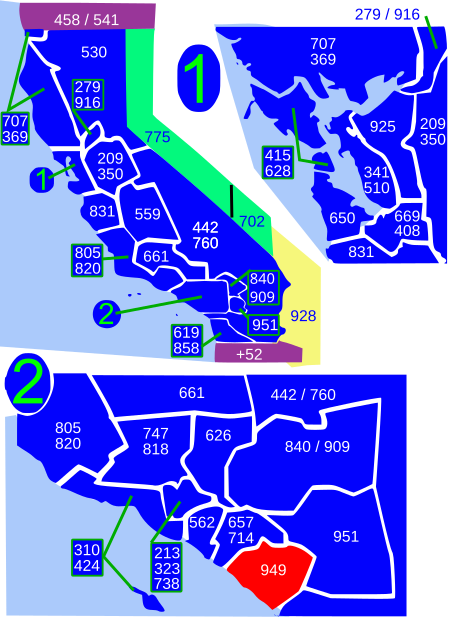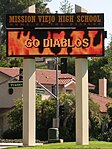Area code 949

Area code 949 is an area code in California that is contained within South Orange County California. On April 18, 1998, the southern cities of Orange County were split from 714, creating area code 949. It includes some of the wealthiest communities in California; including such cities as Newport Beach, Irvine, Lake Forest, Portola Hills, Coto de Caza, Dove Canyon, Aliso Viejo, Trabuco Canyon, Capistrano Beach, Corona Del Mar, Laguna Niguel, Laguna Hills, Laguna Woods, Newport Coast, Foothill Ranch, Robinson Ranch, Mission Viejo, San Juan Capistrano, Rancho Santa Margarita, Ladera Ranch, Dana Point, Laguna Beach, and San Clemente. The city of Costa Mesa is shared between the 949 and 714 area codes, being split at Wilson Street and along Newport Boulevard. A very small portion of Irvine is also in the 714 area code, from the north side of Culver Drive at the I-5 to Jamboree Road in the Marketplace, in the neighborhood of Northpark Irvine.
Excerpt from the Wikipedia article Area code 949 (License: CC BY-SA 3.0, Authors, Images).Area code 949
Sunset Place East,
Geographical coordinates (GPS) Address Nearby Places Show on map
Geographical coordinates (GPS)
| Latitude | Longitude |
|---|---|
| N 33.6 ° | E -117.7 ° |
Address
Sunset Place East 24965
92653 , Acacia Knolls
California, United States
Open on Google Maps







